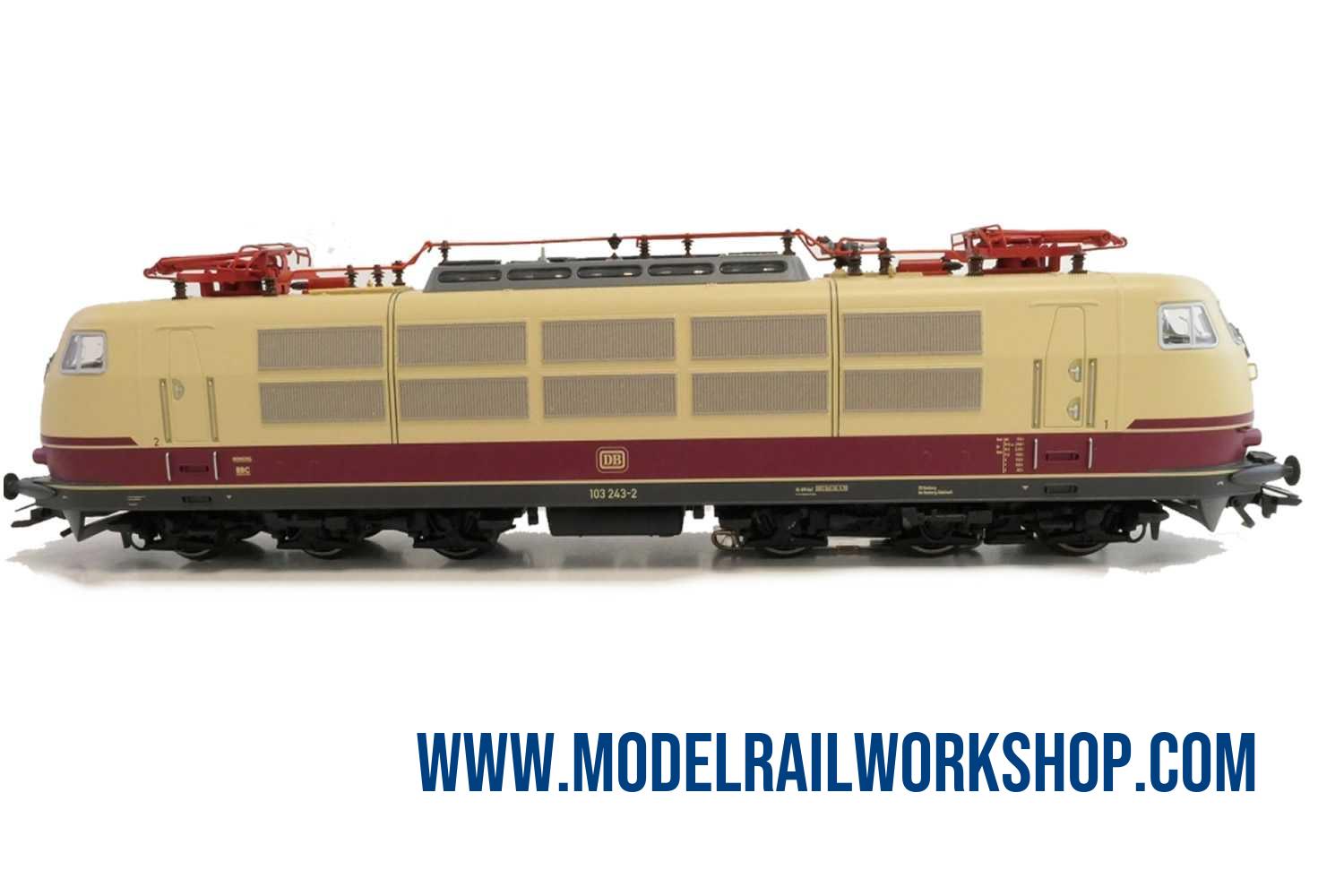
| KEY DATA | |
|---|---|
| Product Name | 39170 Electric locomotive - class 103-1 |
| Object type | Locomotive-Diesel |
| Product Line | Märklin MHI |
| Era | 1970-1990 (IV) |
| Manufactured years | 2017-2019 |
| Text on object | DB |
| Number on object | 103 243-2 |
| Classification | class 103-1 |
| Type of housing | Metal |
| Length | 23.2 cm |
| Technology | Digital MFX+ |
| Railway company | DE-DB |
| Märklin RRP (Year) | 400€ (2018) |
| Koll valuation (Year) | 335€ (2022) |
| Url to Märklin | Klick to GoTo www.maerklin.de |
| Description | |
|---|---|